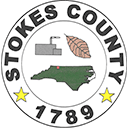Winter Feeding Cattle
go.ncsu.edu/readext?753866
en Español / em Português
El inglés es el idioma de control de esta página. En la medida en que haya algún conflicto entre la traducción al inglés y la traducción, el inglés prevalece.
Al hacer clic en el enlace de traducción se activa un servicio de traducción gratuito para convertir la página al español. Al igual que con cualquier traducción por Internet, la conversión no es sensible al contexto y puede que no traduzca el texto en su significado original. NC State Extension no garantiza la exactitud del texto traducido. Por favor, tenga en cuenta que algunas aplicaciones y/o servicios pueden no funcionar como se espera cuando se traducen.
Português
Inglês é o idioma de controle desta página. Na medida que haja algum conflito entre o texto original em Inglês e a tradução, o Inglês prevalece.
Ao clicar no link de tradução, um serviço gratuito de tradução será ativado para converter a página para o Português. Como em qualquer tradução pela internet, a conversão não é sensivel ao contexto e pode não ocorrer a tradução para o significado orginal. O serviço de Extensão da Carolina do Norte (NC State Extension) não garante a exatidão do texto traduzido. Por favor, observe que algumas funções ou serviços podem não funcionar como esperado após a tradução.
English
English is the controlling language of this page. To the extent there is any conflict between the English text and the translation, English controls.
Clicking on the translation link activates a free translation service to convert the page to Spanish. As with any Internet translation, the conversion is not context-sensitive and may not translate the text to its original meaning. NC State Extension does not guarantee the accuracy of the translated text. Please note that some applications and/or services may not function as expected when translated.
Collapse ▲As winter months approach, now would be a good time to evaluate our nutrition program and be proactive with any necessary ration changes. Below are few points to consider when making plans to feed cattle over winter.
- Cold increases rate at which feed passes through the digestive tract
- Cows can still starve to death on a full stomach – quality and quantity of ration are critical
- Low quality forage + no supplements = likely not meet nutrient requirements
- Nutrient requirements likely increase – remember stage and level of production
- Especially energy requirements
- Winter feed costs are generally the highest: 30 –70% more
- Be strategic….
- Optimize forage utilization
- Evaluate your herd and cull as necessary
- Reduce feed waste
- Stockpile – likely too late for certain forages like Fescue, but consider implementing next year
- Consider early weaning of calves from thin, lactating cows
- Allows cow time to regain condition before rebreeding
- Reduces nutrient requirements of the cow – redirects nutrients away from lactation
Supplemental Feeding
- If a supplement will change animal performance in the future, feed it
- Marginal revenue outweighs marginal cost
- Key performance responses
- Days to first estrus
- Pregnancy rate
- Calf weaning rate and weight
- Energies
- Limit starchy ingredients (corn, wheat, milo)
- Encourage soybean hulls, corn gluten feed, wheat middlings
- Supplements to forages, not forage replacements
- Proteins
- Cottonseed Meal
- Soybean Meal
Also, remember cold and dry environmental conditions are often less stressful to our cattle than cold and wet environmental conditions. Increasing energy can help combat some of the stress experienced by cattle during cold, wet days.




